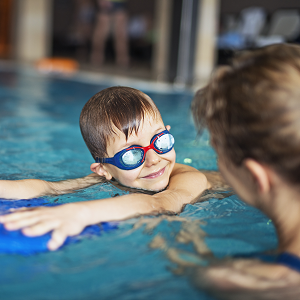SWIMMING AND POOL SAFETY TIPS
SWIMMING AND POOL SAFETY TIPS
In warmer weather, an afternoon spent swimming in a pool or playing in the water is a great way to enjoy time with family and friends, especially for children. However, it is important for parents, caregivers and children to remember to be safe while in the water. Read more for Rural Metro Fire’s swimming and pool safety tips.
Drowning deaths are the second leading cause of unintentional injury deaths for children aged 0–17 years and the leading cause for those aged 1–4 (1)
Ensure that everyone in the family learns to swim well and what to do in a water emergency
- If a child is missing, check the water first. Seconds count in preventing death or disability.
- Know how and when to call 911 or the local emergency number.
- Have appropriate equipment, such as reaching or throwing equipment, a cell phone, life jackets and a first aid kit.
- Enroll in age-appropriate swimming classes.
- Enroll in home pool safety, water safety, first aid and CPR/AED courses to learn how to prevent and respond to emergencies.
Provide close and constant attention to children you are supervising in or near water
- Swim only in designated areas supervised by lifeguards. Always swim with a buddy; do not allow anyone to swim alone.
- Provide close and constant attention to children you are supervising, even when a lifeguard is present, no matter how well the child can swim or how shallow the water, and avoid distractions, including cell phones.
- Never leave a young child unattended near water and do not trust a child’s life to another child; teach children to always ask permission to go near water.
- When in a group setting, designate a “water watcher”.
Take smart precautions and use layers of protection
- Stay within the arm’s reach of any weak or inexperienced swimmer who is in the water.
- Have young children or inexperienced swimmers wear U.S. Coast Guard-approved life jackets around water, but do not rely on life jackets alone.
- Do not rely on the use of water wings, swim rings, inflatable toys or other items designed for water recreation to replace adult supervision.
- If you have a pool, secure it with appropriate barriers to prevent unsupervised access to the water.
- Many children who drown in home pools did so during non-swim times – when they were not expected to be in the water, including as the swimming activity was coming to an end and everyone was thought to be out of the water.
- Children were often out of sight for less than 5 minutes and in the care of one or both parents at the time.
Download an easy to read pool tip sheet
1. Centers for Disease Control and Prevention. WISQARS. Fatal injury data. Leading causes of death reports. 2019.
